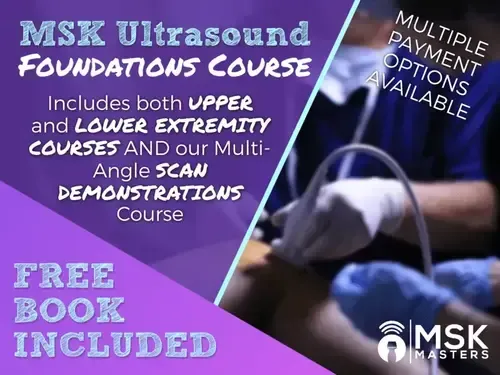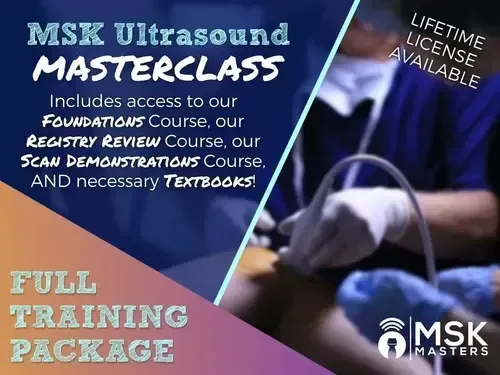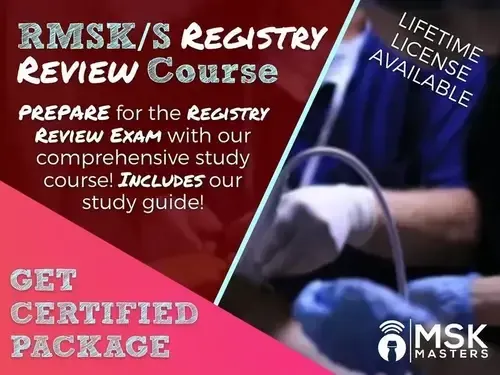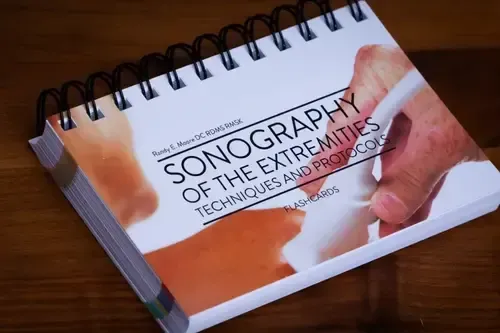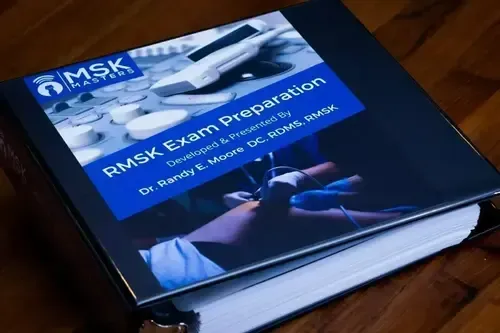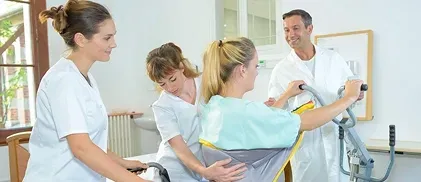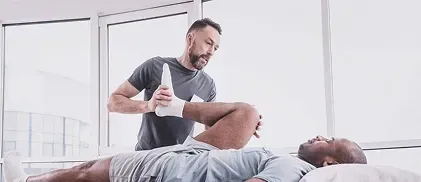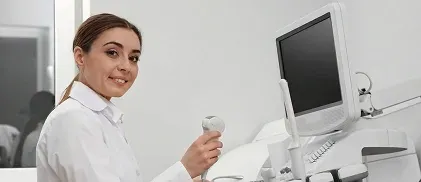

Publications by Dr. Randy E. Moore
Our team of industry-leading professionals combines extensive expertise in musculoskeletal ultrasound with a shared passion for advancing healthcare practices and education.
Publications of Dr. Randy E. Moore.
Susan Halimeh, MD, CRC – Coagulation Research Centre GmbH
Disclosure: Please see Session Details (link below).
Background:
Prophylactic substitution of clotting factor concentrates in haemophilia patients starting in early childhood, defined as primary or secondary prophylaxis, is nowadays the gold standard in developed countries. Prophylaxis compared to on-demand treatment is known to reduce bleeding frequency and joint damage.The occurrence of bleeds, especially joint bleeds leads to joint arthropathy in haemophilia patients, even in young children. Prophylaxis compared to on-demand treatment is known to reduce bleeding frequency and joint damage. The occurrence of bleeds, especially joint bleeds leads to joint arthropathy in haemophilia patients, even in young children.
Aims: To determine the impact of bleeding events on the joint health of children with haemophilia.
Methods: Children with haemophilia aged 0-17 years of any type of severity and treatment regimen from a single HTC centre in Duisburg, Germany were compared to healthy children recruited from the environment of the Duisburg HTC. Joint health was measured using ultrasound (US), Clinician-Reported Outcomes (ClinRO) and Patient-Reported Outcomes (PRO). Joint physical structure and joint function were measured with the ClinRO Haemophilia Joint Health Score (HJHSv2.1); subjective physical functioning was assessed with the PRO HEP-Test-Q. US assessment used the Joint Tissue Examination and Damage Exam (JADE) Protocol. Ultrasound images were obtained with a Fujifilm Sonosite Edge II scanner using 13 – 6 MHz transducers. Evaluations were performed in all children by the same person who is experienced in musculoskeletal US scanning.
Clinical data of haemophilia patients in terms of treatment regime, total and joint bleeding rates in the past 12 months and target joints were collected from patient records.
Differences in the median or in the mean, respectively, were calculated between children with haemophilia and healthy controls and between haemophilia patients across different clinical subgroups.
Results: Forty-six children with haemophilia (mean age 9.1±5 years) and 59 healthy children (mean age 8.5±4.7 years) participated in the Energy Study.The majority of the haemophilic children had haemophilia A (91.3%), were severely affected (60.9%) and received prophylactic treatment (69.6%), most of them were on secondary prophylaxis (53.1%). Haemophilia patients had in average 1.57±1.9 total bleeds (range 0-9) and 0.65±1.2 joint bleeds (range 0-6) in the past 12 months, a HJHS of 2.39±3.8 (range 0-13). 43.5% had a target joint, mainly in the ankles. Most of the children with haemophilia participated in physical education in school (58.7%), mainly 1x/week (72.4%). Almost one quarter received physiotherapy (23.9%); only 2 patients had limitations in their mobility.
Only children = 6 years of age completed the self-rated HEP-Test-Q, resulting in 33 haemophilia patients and 45 controls. Patients treated on prophylaxis (p<.015), severely affected (p<.001), with joint impairments in the HJHS = 1 (p<.022), number of joint bleeds = 1 (p<.029), number of total bleeds = 2 (p<.0001), showed a worse total score in the HEP-Test-Q compared to children on-demand, with moderate/mild haemophilia, no impairment in HJHS, no joint bleeds, less < 2 total bleeds, respectively. No difference was found for type of prophylaxis and target joints.
Compared to controls, patients reported significantly worse subjective physical functioning (MP=77.16±9.5 vs. MC=86.0±7.1; p<0.0001), had a worse HJHS (p<.0001) and showed in the US a significant difference (p<.02) of the longitudinal gap been tibia and talus.
Conclusion: Children with haemophilia showed higher deterioration in their joint health of the ankle measured with US and reported higher impairments in their subjective physical functioning than healthy controls.
Although 96.4% of severe patients were on regular prophylaxis, early signs of synovitis were detected, especially in the ankle. Patients with haemophilia should be monitored early for arthropathy using US and standardized ClinROs and PROs.
Conflict of interest: The Energy Study was sponsored by an unrestricted educational grant from Biotest, Germany.
Additional Publications of Dr. Randy E. Moore.
Advanced Hemophilic Arthropathy: Sensitivity of Soft Tissue Discrimination With Musculoskeletal Ultrasound. Annette von Drygalski MD, PharmD, RMSK, Randy E. Moore DC, RDMS, RMSK, Sonha Nguyen MD, Richard F. W. Barnes PhD, Lena M. Volland DPT, Tudor H. Hughes MD, Jiang Du MD, Eric Y. Chang MD. Published January 24, 2018.
Musculoskeletal Sonography of the Extremities: Scanning Protocols for the shoulder, elbow, wrist, hip, knee, foot, and lumbar spine. 1999, revised 2005, revised 2007, revised 2010,revised 2015. Translated into Spanish 2010. Translated into Korean 2012
Instructional Video: Ultrasound Examination of the Shoulder. Normal and Abnormal Anatomy. Ultrasound Guided Injection Technique.
2011: Protocols and Mechanics of Ultrasound Guided Injections Co-authored with Dr. Victor Ibrahim, MD, Associate Professor PM & R, National Rehab Hospital Washington, DC
Blind Study: “Comparison of Sonographic Findings in Patient’s with Previously Diagnosed Back Pain by MRI, EMG, CT, and X-rayJournal of Clinical Chiropractic, April 1995
“Definition” of Chiropractic: Musculoskeletal Ultrasonography, The Voice, July 1995
Musculoskeletal Ultrasound. A New Dimension In Sports Medicine. RT Image , April 7, 2001 Volume 14 Number 19
“Saving The Shoulder” RT Image July 28,2003 Volume 16. Number 30 1995
“A Potpourri of Musculoskeletal Sonography”. Guest lecturer at Society of Diagnostic Medical Sonographers National Convention.
1991 to Present : Extensive clinical experience in application and correlation of sonographic findings to patient clinical presentation. Approximately 10,000 cases.
2010 University of Dayton, Doctor of Physical Therapy Program. Efficacy of Ultrasound Guided Platelet Rich Plasma Injections of the Biceps Tendon in Baseball Pitchers
2012 University of Kentucky, Sports Medicine Research. Inter- and Intra-rater Reliability of Musculoskeletal Diagnostic Ultrasound as a Tool to Locate and Measure the Anterior Talo-Fibular Ligament of the Ankle
2012 “Musculoskeletal Ultrasound: A Primer for Primary Care” Feature Article: Practical Pain Management, November 2012
2013 “Ligament Injury and Healing: A review of Current Diagnostics and Therapeutics”
The Open Rehabilitation Journal. 2013,6, 1-20
In progress: “ The Learning Curve to Proficiency in Musculoskeletal Sonography”University of Dayton, Doctor of Physical Therapy Program
2015 Advanced Hemophilic Arthropathy: Sensitivity of Tissue Discrimination with High Resolution Musculoskeletal Ultrasound to Guide Treatment Decisions, Journal of Thrombosis and Haemostasis
2016 Aug 3. doi: 10.1111/hae.13057. [Epub ahead of print]
Efficacy and safety of point-of-care ultrasound-guided intra-articular corticosteroid joint injections in patients with haemophilic arthropathy.
Explore Dr. Moore’s Research
Dr. Randy E. Moore has contributed extensively to the fields of musculoskeletal ultrasound and hemophilia research. Dive deeper into his work to uncover studies, case reports, and publications that provide a wealth of knowledge and insights. Ideal for healthcare professionals, researchers, and anyone interested in advanced ultrasound applications in clinical practice.
Learn About Our MSK Ultrasound Courses
Building on Dr. Moore’s research and expertise, our MSK ultrasound courses provide comprehensive training in diagnostic and therapeutic applications. From foundational concepts to advanced techniques, these courses offer hands-on learning experiences designed to enhance your skills in musculoskeletal ultrasound.
